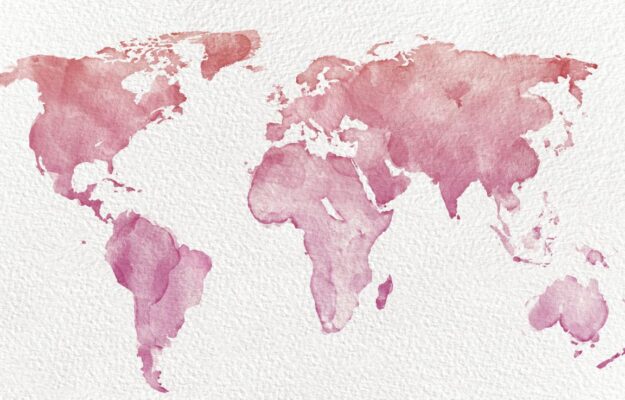A summary preview of the “2023 World Vitivinicultural Economy” by the International Organization of Vine and Wine - OIV, led by Luigi Moio, circulated by Giorgio Del Grosso, head of the OIV Statistics and Digitalization Department, was given at the conference organized by the Accademia Italiana della Vite e del Vino at the Accademia dei Georgofili, yesterday in Florence, part of the celebrations for the 100 year anniversary of OIV. On the global level, the 2023 grape harvest was the scarcest since 1961. Wine production was 237 million hectoliters, down -10% compared to 2022, and a net decrease in all the main wine producing Countries. Global production was greater than demand by more than 16 million hectoliters of wine, mainly because consumption is down -2.6% (for the third consecutive year), stopping at 221 million hectoliters. International trade is also in difficulty, as exports, overall, have fallen -6% in volume, to 99 million hectoliters, the lowest figure registered since 2010. Value, instead, is at a record high, 36 billion euros, as the average price per liter had never been so high, at 3.62 euros on average, up +2% compared to 2022, and 29% compared to 2020. However, these figures are due to the effect of inflation and higher costs along the supply chain, which partially spread to the market, but wine is still “global” in nature, as 45% of all the wine consumed in the world is drunk in a Country other than that of origin. The conference began at the “Wine Ministerial Meeting”, held recently in Franciacorta (here is the WineNews report, and our interview with Professor Moio), which will end in October at the Dijon headquarters of the OIV, in France.
The report revealed there was a slight decrease in the world vineyard, down to 7.2 million hectares (including wine and table grapes), that is, -0.5%, compared to 2022. The decrease was due to the combined effect of the Chinese vineyard stabilizing, which had grown significantly from 2010 to 2020, and it was also due to the general downward trend almost everywhere. Spain is still the leader, counting 945.000 hectares of vineyard, ahead of France at 792.000 hectares, China at 796.000 hectares (though almost all table grapes), and Italy at 720.000 hectares (more than 660.000 hectares are wine grapes, ed.). On the production level, the top 3 countries, namely France (48 million hectoliters in 2023, +4% compared to 2022), Italy (38.3; -23%) and Spain (28.3; -21%), total 48% of production. This figure reached 75% when considering the top 8 Countries (including the USA, 24.3 million hectoliters, Chile at 11, Australia at 9.6, South Africa at 9.3, and Argentina at 8.8), while the EU alone accounts for 62% of the total. Wine production is concentrated in a few countries, while consumption is even more concentrated, as there are 195 countries in the world where wine is drunk, but 5 markets account for 51% of total consumption. These markets are, the USA at 33.3 million hectoliters, France at 24.4, Italy at 21.8, Germany at 19.1, and the UK at 12.8. Moreover, they have all seen consumption decrease, in quantity, -2% and -3% in 2023 compared to 2022. Widening the scope to the first 10 countries (adding Spain at 9.8 million hectoliters, + 2%, Russia, at 8.6; +3%, Argentina at 7.8; -6%, China at 6.8; -25%, and Portugal at 5.5; -9%), it was 68%, though there was a general, and not very comforting, downward trend.
Regarding wine typologies on the market, bottled still wines continued to take more than half of the pie in volume (52%) and in value (67%), but were down -9% in volume and - 6% in value. Sparkling wines had 11% of the quantity and 24% of the value, but were down -4% in volume, and +1% in value. The bulk market, was worth 33% of the volume (-4% in 2023 compared to 2022) and only 7% of the value (-10%), while the bag-in-box t was still residual, worth 4% in quantity (-4%) and 2% in value (stable). Looking at the main exporting Countries in terms of volume, Italy was number 1, at 21.4 million hectoliters (-1% compared to 2022), ahead of Spain at 20.8 (-3%) and France at 12.7 (-6%). In terms of value, French wines dominated at 11.9 billion euros (-3%), ahead of Italian wines, at 7.7 billion (-1%) and Spanish wines at 2.9 billion (-3 %). However, there was a downward trend in all the main exporting Countries in volume (in order, after the first 3 positions: Chile, Australia, South Africa, Germany, Portugal, Canada and the USA) and in value (after the first 3, Chile, Australia, New Zealand, the USA, Germany, Portugal and Argentina). Regarding imports, Germany was the leader in volume, at 13.6 million hectoliters (-0.3%), ahead of the UK (12.3; -5%), the USA (12.3; -15 %) and France (6; -5%). In terms of value, the leader was the USA (6.2 billion euros, -12%), followed by the UK (4.7; -3%), Germany (2.6; -5%) and Canada (1.8; -15%). In general, these numbers describe and confirm a complicated global picture for wine, affected by changes in consumption, climate change, inflation, loss of buying power and wars - all very complex issues to manage.
Copyright © 2000/2025
Contatti: info@winenews.it
Seguici anche su Twitter: @WineNewsIt
Seguici anche su Facebook: @winenewsit
Questo articolo è tratto dall'archivio di WineNews - Tutti i diritti riservati - Copyright © 2000/2025









































































































































































































